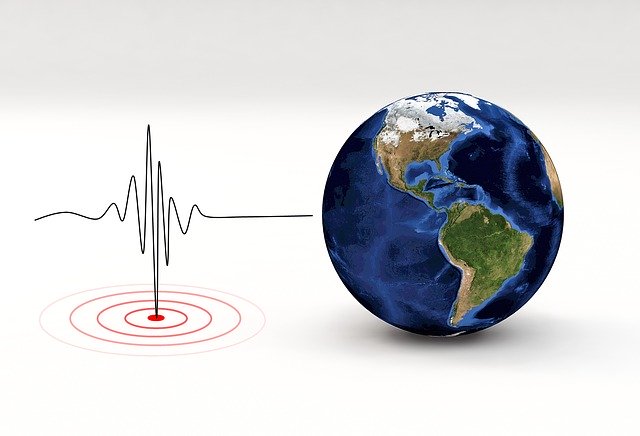In earthquake-prone areas of the country, building up to code is crucial. Private commercial building owners and investors need to understand how they can update their properties or build new ones to ensure that they are as safe as possible during seismic events.
Dr. Pedram Zohrevand, an engineering consultant and scientific researcher, shares ways in which builders and investors can make sure their properties are safe and secure under severe seismic conditions.
The basic principles of earthquake safety are as follows. Buildings are mostly designed to support vertical loads, such as a dead load from materials and fixed equipment and live loads from furniture, partitions, and people using the building. The difference in earthquake-prone areas is that buildings must also be protected against lateral or sideways movements. To make a structure safe against the lateral movement, a proper lateral/seismic load resisting system, such as a shear wall, moment frame, braced frame, etc. should be designed for the building
Earthquake Codes
In many areas of the country, building codes have become adapted to the increased need for earthquake security. It is necessary to bring existing buildings up to code in many jurisdictions. These adaptations are in the public’s, the builder’s, and the tenant’s best interests.
Where seismic events are concerned, the worst buildings are constructed from concrete blocks and unreinforced brick. Bricks and blocks are not conducive to handling lateral movement even when they seem to be securely mortared together. If a developer or business owner has one of these buildings, it is vital that they are reinforced to come up to code.
Seismic building codes vary across the country and throughout the world. Seismic building codes have a direct impact on the number of residents who survive earthquakes. “The Big One” is feared in parts of the American West, and building owners are often concerned about their buildings surviving a seismic disaster. Building up to seismic codes may be expensive, but this practice can save lives and save money in the long run.
On the whole, richer countries have stronger building codes that are vigorously enforced. In Chile, an 8.8 magnitude quake killed 700 people. In Haiti, an earthquake only measuring 7.0 killed 200,000 people. This stark difference underscores the importance of building codes and a proper code enforcing system.
There are different conventional and advanced seismic resisting systems that can be incorporated in new construction and in the seismic retrofit of an existing building, which is summarized below by Dr. Zohrevand:
Conventional Seismic Load Resisting Systems:
There are several systems and techniques that have been used for the last three decades by structural engineers and contractors to make buildings earthquake resistant.
The most common systems are known as shear walls, moment frames, braced frames that are very familiar for contractors and developers. These systems are built of common construction materials, such as wood, concrete, and steel.
Most of these systems can also be used for the seismic retrofit of existing structures. However, the application of these systems in the retrofit of existing buildings needs major construction work and subsequently interruption of building operation, which sometimes makes them infeasible retrofit options.
Dampers/Shock-Absorbing Systems
Damper systems are very exciting seismic-resistant devices that can be used in larger buildings to absorb earthquake energy and help the structure to safely resist the earthquake-induced loads and movements.
There are several types of seismic damper systems, including Viscous Dampers, Viscoelastic Dampers, Friction Dampers, etc., that are being designed and used within the building structural systems, mostly along with other seismic load resisting systems.
Simple and rapid application techniques of damper systems make them a favorite earthquake resisting alternative in new construction and retrofit projects.
Base Isolation
For larger buildings, one of the nontraditional earthquake-resistant designs is the “floating” foundation. These experimental foundations made from different systems such as rubber bearings, friction bearings, ball bearings, etc., are known as “base isolation.”
In Japan and other earthquake-prone areas around the globe, these techniques have been adopted with varying results. Overall, using base isolation is considered to be an opportunity to reduce building damage from seismic events and to save lives. The technique is being adopted slowly, with many scientists agitating for the process to move more quickly to prevent future loss of life.
Larger buildings like skyscrapers can be built or retrofitted on flexible foundations. These foundations are able to absorb both vertical and lateral loads. Rubber is a relatively inexpensive material that has been used in foundations for decades. In the early 1980s, it was first used as a method of reducing earthquake effects.
Composite Materials
Dr. Zohrevand’s research has focused on several different types of enhancements that make buildings safer. One of the most popular building techniques he has promoted is the use of composite materials such as Fiber Reinforced Polymers (FRP) and Ultra-High Performance Concrete (UHPC).
A scientific study found that the application of both FRP and UHPC can significantly enhance the seismic force-resisting capacity of the structure. When the ultra-high performance concrete confined or reinforced with fiber-reinforced polymers, the hybrid system can resist 20 percent higher ground acceleration, as compared to their conventional reinforced concrete counterparts.
These advanced materials can be used in different parts of new and existing building structures to assure their seismic resiliency. Over the last few years, the application of Fiber Reinforced Polymers has been known as one of the best seismic retrofit techniques for non-ductile concrete and unreinforced masonry buildings.
Engineers are continually developing new ways to enhance the stability of buildings in seismic events. Building owners and developers could use these techniques to ensure that a building remains steady during an earthquake.
Dr. Pedram Zohrevand is a proponent of bringing buildings up to earthquake codes. These methods will be able to increase the value of buildings and to avoid the large expense of rebuilding after a seismic event. His scientific research continues to make a difference in the engineering world.

